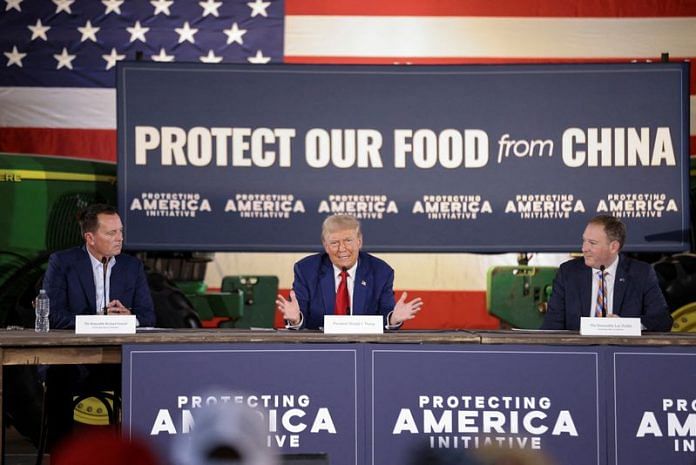By Mei Mei Chu
BEIJING (Reuters) – Chinese imports of U.S. farm goods, which have slowed since the trade war during Donald Trump’s first presidential term, could be hit again if tariff hostilities resume when he returns to office in January, experts say.
China remains the biggest market for U.S. agriculture products despite a decline in imports since 2018 after Beijing slapped tariffs of up to 25% on soybeans, beef, pork, wheat, corn and sorghum in retaliation for duties on Chinese goods imposed by Trump.
Trump has floated the idea of blanket 60% tariffs on Chinese products in a bid to boost U.S. manufacturing, which if enacted could again prompt retaliation on agricultural goods.
China has played down the prospect of another trade war, saying it would like to expand cooperation.
Beijing has since 2018 pushed to diversify sourcing and raise domestic output in its quest for greater food security.
Here are key details on China’s import of U.S agriculture commodities and how the trade has evolved:
‘IRREPLACEABLE’ MARKET
China brought in $34.05 billion worth of U.S agriculture products in 2023, a 20% decline from a year earlier, with imports on track to fall further in 2024.
Nonetheless, China remains the largest export market for American farmers. U.S farm leaders and traders have described China as “irreplaceable” even as they look for other markets to offset declining Chinese demand.
SOYBEANS
About half of American soybeans, the top U.S. export to China, are shipped to China, accounting for $15.2 billion of trade in 2023, according to the U.S. Census Bureau.
However, China has turned to cheap and plentiful Brazilian supplies to reduce its dependence on U.S. beans, with the U.S market share in China plunging to 18% this year from 40% in 2016, according to Chinese customs data.
CORN
The U.S was China’s dominant corn supplier for decades until Beijing approved Brazilian imports in 2022.
China’s imports of U.S corn, at $2.6 billion in 2023, are up from a decade ago to feed its massive livestock herd, but Brazil has swiftly overtaken the U.S. to become China’s top supplier.
MEAT AND OFFAL
China is a key market for U.S. exports of chicken legs, pork ears and offal – products for which there is little U.S. demand.
China’s meat and offal imports from the U.S. have declined since 2020 to $3.3 billion last year.
COTTON
China accounted for a quarter of U.S cotton shipments in value last year, according to the U.S. Department of Agriculture.
Shipments of U.S cotton into the world’s second largest economy stood at $1.66 billion in 2023, down from $3 billion in 2022, as economic headwinds squeezed demand for textiles and garments.
SORGHUM
China imported $867 million worth of sorghum from the U.S in 2023, down from $1.52 billion in 2014. Imported sorghum in China is mostly used as a corn substitute in animal feed.
Competition from Argentina and Australia for sorghum as well as a flood of cheaper Brazilian corn have curbed Chinese demand for U.S sorghum.
WHEAT
China imported $319 million worth of U.S wheat in 2023, its smallest such purchase in three years amid ample supplies from Australia, Russia, France and Canada.
Growing domestic production – China is the world’s largest wheat producer – has cut demand for overseas supplies, although food manufacturers still require high-protein wheat imports to make certain products.
(Reporting by Mei Mei Chu and the Beijing newsroom; editing by Naveen Thukral and Philippa Fletcher)
Disclaimer: This report is auto generated from the Reuters news service. ThePrint holds no responsibilty for its content.






